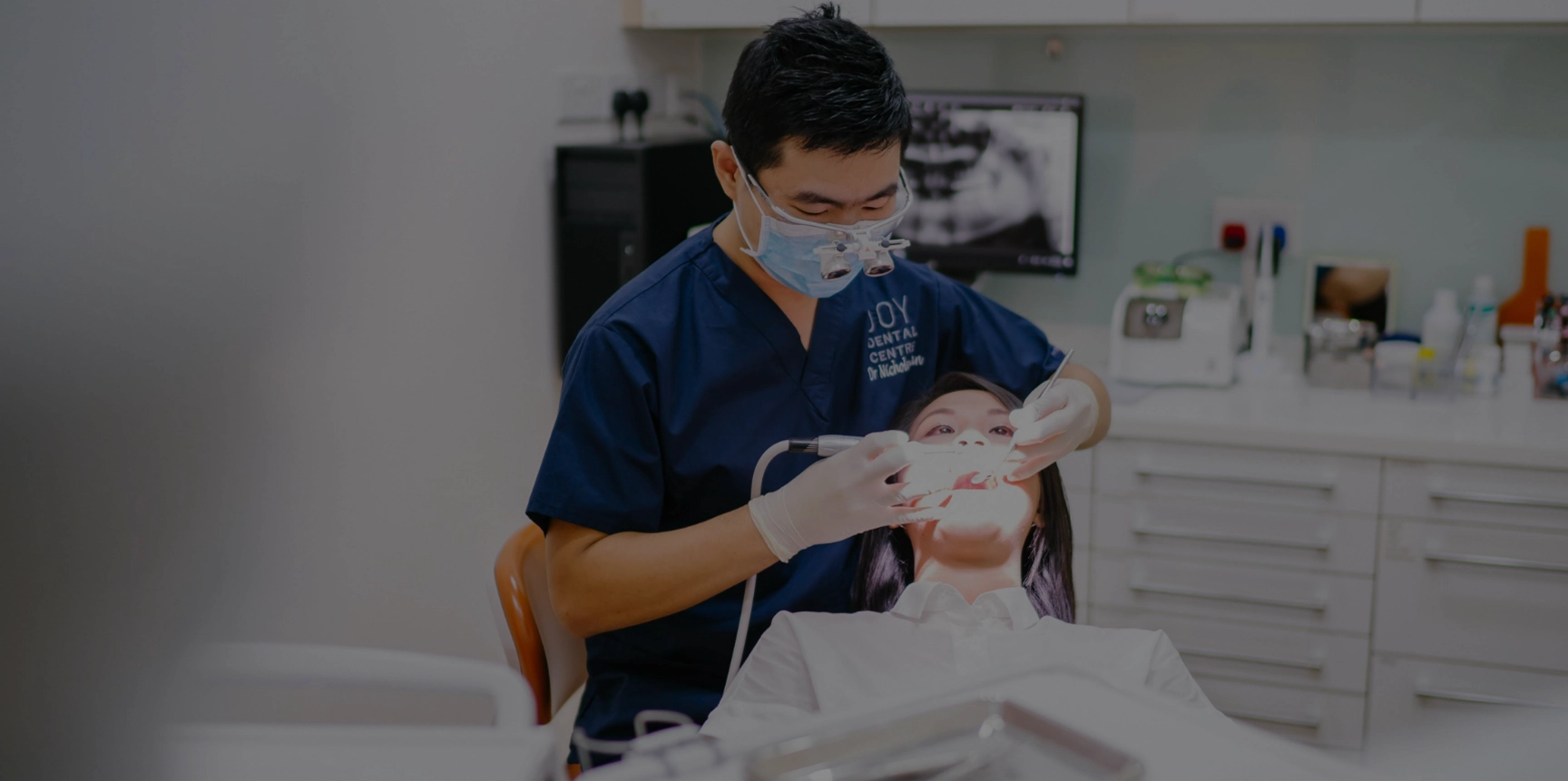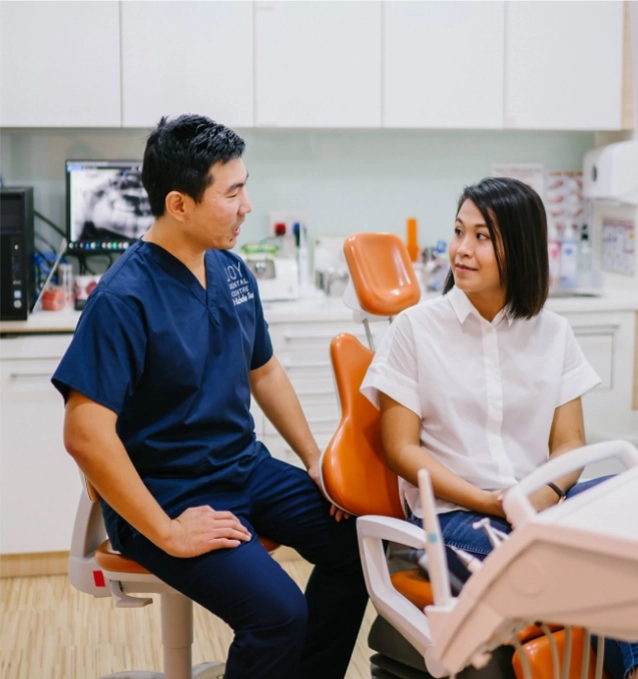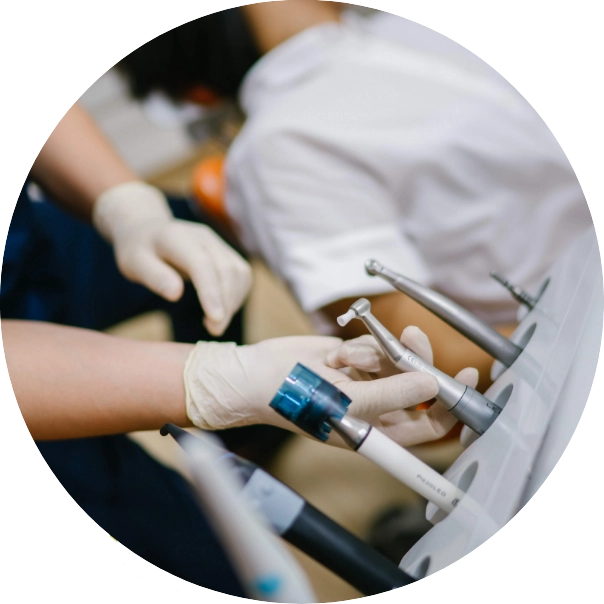VITAL PULP THERAPY
Save damaged teeth without extraction
Pulp healing procedures can save your natural tooth. A conservative alternative to conventional root canal treatment.

What is Vital Pulp Therapy?
Vital pulp therapy is a regenerative technique. It helps retain teeth that are vital (still living), instead of extraction or conventional root canal therapy being the only options.
VPT involves removing only the infected portions of live tissues within the tooth, using novel biocompatible materials that promote tissue regeneration.
As the remaining healthy tissues in the root canal system are preserved, the tooth will not become dried out and brittle. Therefore, it is less susceptible to root fractures.

A Dental Innovation For Saving Teeth
Vital Pulp Therapy has gained traction in the last 5 years due to the advent of biocompatible materials, among other factors – it now has a growing range of applications.
Technological developments we use for VPT:
- BioDentine, a bioceramic material
- Rubber dam isolation: moisture control
- 3D CT scans

FAQ
What does Vital Pulp Therapy treat?
Vital Pulp Therapy can help with a range of dental issues, including:
- Tooth decay that has reached the pulp
- Toothache, tooth pain
- Deep cavities in primary teeth
- Chipped or broken teeth
How does Vital Pulp Therapy work?
A pulpotomy procedure entails the following:
- We take diagnostic imaging (periapical radiographs).
- We determine if the procedure is right for you.
- We administer local anaesthesia.
- A small hole is made in the tooth.
- The tooth is isolated with a sanitary dam.
- Your dentist carefully removes damaged enamel and pulp.
- The pulp chamber is filled with a biocompatible material.
- You may receive a restorative crown for support.
- We review at 3 and 6 months to confirm healing.
The term VPT can also refer to other pulp preservation strategies such as pulp capping.
What are pulpotomy and pulpectomy?
A pulpotomy is the removal of affected pulp in the tooth crown, when pulp inflammation has not yet reached the tooth roots or lower pulp.
- A partial pulpotomy removes only the top-most layer of coronal pulp.
- A complete pulpotomy removes all of the pulp in the tooth’s crown.
We use calcium hydroxide or Biodentine, a recently developed MTA-equivalent material that shows favourable research.
A pulpectomy is the complete removal of inflamed pulp, including in the roots.
- In paediatric dentistry, the procedure removes all the pulp, but seals with a resorbable material to allow the child’s tooth to continue development.
- For adults, it is done as the first step in root canal treatment.
Pulpotomy is preferred over pulpectomy, as it allows more pulp survival.
What is pulp capping?
Pulp capping is a procedure where a sealing material (calcium hydroxide) is placed over a pulp exposure or near-exposure of the tooth pulp, to close off the inner tooth and allow the dentin to regenerate.
Otherwise, bacteria enters the pulp chamber and causes infection. The exposed pulp can be due to cavities (a carious pulp exposure) or mechanical trauma.
Our dentists can do both direct and indirect pulp capping.
Joy Dental opts for pulpotomy where possible, as it has shown good treatment outcomes in permanent teeth compared to pulp capping. Pulp capping is not recommended for a child’s teeth: VPT is safer for kids.
Who can get Vital Pulp Therapy?
Pulpotomy is often performed on children (baby teeth), to avoid premature tooth loss or as a temporary measure until standard endodontic treatments are suitable.
Research is now supporting pulpotomy in teens and adults (permanent teeth) as a conservative treatment modality. Biocompatible, regenerative techniques and materials made available in recent years are improving VPT’s success at saving the natural tooth.
This may allow you to delay or avoid having a root canal procedure and crown, the traditional procedure for deep decay in teeth.
How does pulp therapy differ from a root canal or extraction?
Vital Pulp Therapy is done on living teeth, where the tooth’s pulp is still relatively healthy.
The healing material used helps your natural tooth to regenerate itself, which is preferable to losing the tooth or only maintaining its shell (as in a root canal treatment). A pulpotomy helps you keep as much healthy pulp as possible.
- An extraction refers to removing teeth.
- A root canal treatment removes all of the dental pulp before shaping, cleaning, and sealing the root canals, prior to a final restoration (crown) for structural support.
- A paediatric root canal refers to a pulpectomy. It is also known as a baby root canal, kids root canal, or children’s’ root canal.
These are non-vital treatments, as they are done on dental pulp that is no longer alive.
How long does a pulpotomy take? Is it painful?
The pulpotomy itself is quick, taking less than 1 hour in most cases. Depending on the method determined by your dentist, your procedure may be split into multiple visits.
You or your child should be able to return to normal activities the same day. Healing is generally smooth, with mild soreness lasting a few days at maximum.
Pulpotomy should not hurt. Patients are generally very comfortable throughout the procedure, as we use local anaesthetic. In fact, it is the least painful compared to alternative options.
Cost Of Vital Pulp Therapy
Vital pulp therapy in Singapore is an affordable alternative for suitable cases, when compared to extraction with a replacement or conventional root canal treatment.
Pulpotomy
From $550*
Before GST
TREATMENT INCLUDES:
- Treatment radiographs
- Rubber dam isolation
- Caries (cavities) removal
- Biodentine placement
- Composite resin build-ups
- Followup review up to 6 months
*Fee is dependent on complexity of case. Does not include consultation and diagnostic radiograph; or any additional measures for complex cases (such as CT scan).
Have Questions?
Contact us about pulpotomy in Singapore!


